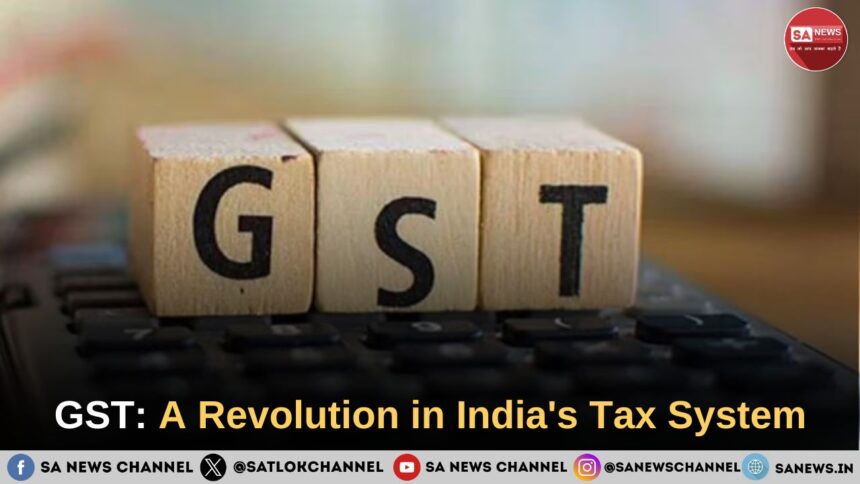The Goods and Services Tax (GST) represents a transformative change in the taxation framework of India.. Implemented on July 1, 2017, GST unified various indirect taxes in the country. It is a tax system based on the concept of one nation, one tax, one market. In this blog, we will discuss various aspects of GST, its benefits, challenges, and impacts.
What is GST?
Goods and Services Tax (GST) is an indirect tax imposed on the provision of goods and services. This tax operates at multiple stages, being applicable throughout the processes of production, distribution, and consumption. GST is divided into four main rates: 5%, 12%, 18%, and 28%, with some goods and services subject to special rates.
Types of GST
- CGST (Central GST): Collected by the central government.
- SGST (State GST): Collected by the state government.
- IGST (Integrated GST): Applied to inter-state transactions and collected by the central government.
Benefits of GST
- Unified Tax System: GST has consolidated various indirect taxes like VAT, service tax, and excise duty into a single tax, making the tax system simpler and more transparent.
- Elimination of Cascading Effect: GST has eliminated the cascading effect of taxes, reducing the prices of goods and services.
- Ease of Compliance: Registration, return filing, and tax payment under GST are done online, making compliance easier for taxpayers.
- Curb on Black Money: GST has increased transparency in business transactions, curbing black money.
- Increase in Inter-State Trade: GST has simplified inter-state trade, boosting economic growth.
Challenges of GST
- Initial Difficulties: Businesses and entrepreneurs faced difficulties in understanding and implementing the new tax system in the initial phase of GST.
- Technical Issues: Technical problems in the GST Network (GSTN) caused issues for taxpayers in filing returns during the early days.
- Multiple Rates: Different rates for various goods and services have made the tax system complex.
- Revenue Loss: Some states faced revenue loss in the initial phase after the implementation of GST.
Impact of GST
- Impact on Consumers: GST has brought stability to the prices of goods and services. Although certain prices have fallen, others have risen.
- Impact on Businesses and Entrepreneurs: GST has simplified tax compliance for businesses and entrepreneurs, although it took time for them to understand and implement the new system.
- Impact on Government: GST has helped the government increase tax collection and bring transparency to the tax system. Additionally, GST has played a significant role in curbing black money.
- Impact on International Trade: GST has presented India as a unified market, increasing foreign investors’ confidence and boosting international trade.
GST Reforms
Periodic reforms are being made to make the GST system more effective. The GST Council, the highest decision-making body for GST-related issues, regularly meets to implement new policies and reforms. In recent years, the GST Council has made several important decisions, such as the composition scheme for small businesses, simplifying the return filing process, and revising rates.
Also Read: India’s Goods and Services Tax (GST) Collection Sees Significant Growth in November 2024
Conclusion
GST is a significant reform in India’s tax system that has made the tax system simpler, more transparent, and effective. GST has fostered stability and growth in the Indian economy, notwithstanding the initial challenges and issues encountered. In the coming years, further reforms in the GST system are expected, making it more effective and beneficial.
Finally
The goal of GST is to establish a uniform tax system and promote economic growth. Collaboration among the government, businesses, and citizens is essential for the successful implementation of this initiative. GST has given a new direction to India’s tax system and presented it as a model tax system at the international level.
Revolutionary Spiritual Development as articulated by Sant Rampal Ji Maharaj.
True Worship and Meditation
Sant Rampal Ji Maharaj emphasizes the importance of true worship and meditation on the True Name (Satnaam). He advocates receiving and chanting mantras from a SatGuru, which purifies the soul from past karmas and leads it to Satlok, the eternal realm of the Supreme God.
Importance of SatGuru
According to Sant Rampal Ji, spiritual growth is guided by the teachings of a true spiritual leader or SatGuru. The SatGuru provides the correct methods of worship as prescribed in holy scriptures, ensuring that followers are on the right path to spiritual liberation.
Avoiding Negative Influences
Sant Rampal Ji advises surrounding oneself with virtuous company and avoiding negative influences. He emphasizes that associating with righteous individuals and avoiding detrimental environments is crucial for spiritual progress.
True Worship over Pilgrimages
Pilgrimages and rituals hold no real benefit in attaining salvation. Sant Rampal Ji highlights that only true worship, as directed by the SatGuru and holy texts, can lead to spiritual liberation.
Benefits of True Worship
True worship can cure diseases, bring peace of mind, and ultimately lead to spiritual liberation and eternal bliss. By following these teachings, individuals can achieve profound spiritual growth and reach the ultimate goal of Satlok.
Sant Rampal Ji Maharaj’s teachings offer a clear and structured path for those seeking to revolutionize their spiritual journey.









